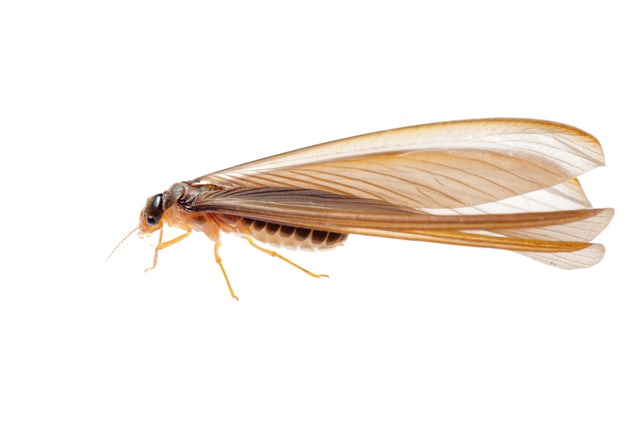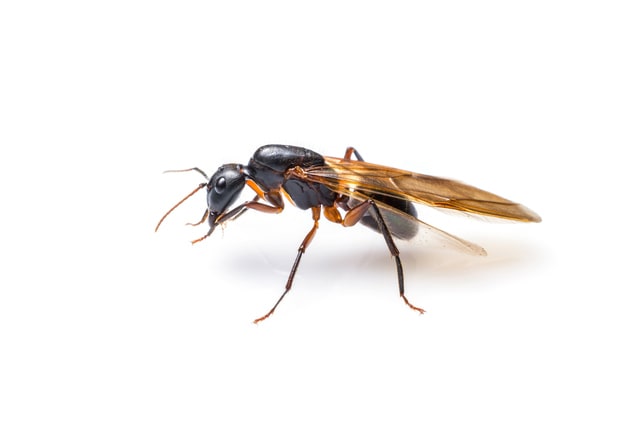
Seven Tidbits on Termites
November 25, 2019
Unfortunately, termites enjoy our warm Alabama weather. Buildings throughout the state are at risk of infestations, although certain areas may have higher concentrations. For example, Mobile and Baldwin counties are especially susceptible to the invasive Formosan termite, which showed up there in the late 1980s. Below is some information that may help you and your clients regarding termites, termite treatment, and wood infestation reports.
1. Mud tunnels and swarms - you may have termites.
Termites are not typically seen until a good number are present. Some telltale signs of termites are mud tubes up concrete walls, tunneling in wood or sheetrock, and swarming insects. A termite swarm is when the winged insects fly to form a different colony. Swarms usually occur in the spring, as the weather warms. Keep in mind that flying ants may swarm as well but have some differences - termites have two sets of uniform-sized wings and a uniform-sized waist, while ants have one set of large wings, one set of smaller wings, and a pinched waist. For additional information and pictures, go here. If you see termites, chances are you have an infestation and should have the house treated.

Termite

Flying Ant
2. A termite contract (commonly referred to as a bond) is not the same as the wood infestation report.
This may be old hat for long-time real estate agents, but terminology is important. A termite contract is the agreement with the termite treatment company in which the company agrees to treat a property for termites. The contract provisions typically cover the term of the contract, how the contract is renewed, what type of treatment is provided, and what happens when termites are found, to name just a few provisions. Obtaining termite treatment is straightforward and should not impact a closing.
A wood infestation report is a report that describes any insect infestations in a building. Purchase agreements usually contain a provision about wood infestation reports, which are typically provided to a buyer before a property closes. The report is done by a pest treatment company which inspects the property for pests. As detailed below, it may be difficult to obtain a wood inspection report for some buildings, which can delay or cancel the closing.
3. Some companies will not do a wood infestation report on houses when certain materials are present.
When not installed with termites in mind, certain materials hinder or prevent a termite company from providing a wood inspection report on a house. Spray-foam insulation is one of these materials because the structure under the insulation (studs, joists, etc.) are not easily viewed to determine whether termites are present. Because spray-foam insulation has only been used for a short time, the issue is usually limited to newer homes. If you are planning to have spray-foam insulation installed in a home, whether in a new or existing home, discuss with the insulation company about installing the insulation in a way that allows termite inspections. For those with spray-foam insulation, consider the next point.
4. Think twice before switching termite companies.
Some home buyers may express interest in changing to another termite treatment company instead of going with the seller’s existing company. Before changing termite companies, keep in mind that changing companies can create a proof issue if termite damage is found. The new company may claim that the damage occurred during the old company’s tenure, while the old company may claim it is new damage. This is especially true for newer houses that have had the same termite company treating the property since construction. In these situations, any damage could only have occurred during the time that the original termite company treated the house, negating the proof issue.
Also, if the house has spray-foam insulation, switching companies may cause issues obtaining a wood infestation report if the buyer later wants to sell the house. This can occur when the new company is comfortable treating a house for termites but not comfortable signing a report on whether termites are present.
5. Two treatments are commonly used.
There are two common treatments for termites. One is a liquid treatment that is applied to the soil around a building. Termites tunneling through the treated soil encounter the treatment and are killed. The second common treatment is a bait station, where, much like it sounds, delayed-action bait is placed in a cylinder below ground around a home. Termites eat the feed, take some back to the nest and are killed. Some companies do one treatment or the other, and other companies do both. Both treatments are effective, but it is a good idea to talk to your termite company about which they do and why.
6. Read the termite contract - re-treatment does not mean repair.
Termite contracts are not all the same. Some termite contracts do not require the termite company to repair termite damage but only provide for re-treatment of the property when termites are found. Other contracts will provide for repair of damages from termites while the house is under contract. Even the repair provisions can differ. Some repair provisions only cover damage to the structure while others also cover furniture. It is vitally important to read the contract and know what is covered and what is not covered.
7. Be present during the annual inspection.
What can homeowners do to protect themselves and their property you may ask? The most obvious is to hire a termite company to treat a house for termites. Alabama law requires termite companies to provide annual inspections of houses they have under contract. So, homeowners should make an effort to be present when the termite company does its annual inspection. While with the company, you can see what they are doing and ask questions. This not only serves as accountability for the termite company but a way to know what has been done if termites later appear.